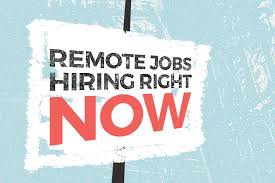
You can travel the world with a digital nomadic job. It is also incredibly lucrative. Digital nomads have the ability to do a variety of jobs, both full-time and freelance. Many digital nomads also own businesses. These business owners can also do writing, teaching, and content creation.
A good digital nomad job can be difficult to find. It is important to research the job that you are interested in and make sure to apply for it. Many digital nomads opt for freelance jobs to earn money while on the move. You might also consider starting your own company. If you do decide to start your own business, you will need to first figure out what you want to sell. This will allow you to plan your marketing strategy.

Numerous online courses can help you get started. Hubspot is W3Schools, Udemy and Skillshare are some of the options. Some of these courses may require you to have a degree, but you can also enroll in a free online course that is aimed at beginners. You can learn a variety of different social media strategies.
Blogging can be a good job for digital nomads, especially beginners. Writing articles, sharing them on social networks, and growing your blog can all make you money blogging. A freelance writer might be an option. Blogs are a great way for you to travel and write about the topics that matter to you. Writing is a passion if you are interested. There are many options to write about the topics you care about.
Some digital nomads prefer a traditional job. These individuals can take part-time and full-time jobs at companies, but they still need to demonstrate that their lifestyle doesn't interfere work. Digital nomad jobs are flexible enough to allow you to work wherever you like, but it's important that you find a job that allows you to live your life while you work.
Blogging is not the only digital nomad job that is worth the title of "best." Other popular digital jobs include online teaching, graphic design, web development, and social media management. Many photographers travel to discover the best locations to shoot. Instagram allows you to connect with many photographers and many will pay for your services.

Small jobs, like website flipping are some of the most lucrative digital nomad careers. Website flipping is an emerging profession. It's easy to see how it makes sense. You can flip cheap properties for a profit, and most people are interested in buying something that they can't afford on their own. You might need to research the products or services that you are selling, depending on what type of business it is. You can also teach online, or help students learn English. You can earn over $10,000 a month from sponsorships and display ads.
FAQ
How can you live a life of travel and work from abroad?
It's not always easy to figure out the best way of traveling and working abroad. It differs depending on your goals, skills, personality, interests, financial situation, family, friends, location, etc. There are a few things we can be certain of that will make this lifestyle possible. These are:
-
Remote Working
-
Living in an Airbnb, or similar accommodation
-
A Car You Don't Need (Or None at All)
-
Being Self Employed
-
Spend less on your travels
These are all things we will discuss in detail. We'll explain how they work, what money you need, where to find affordable accommodation and how you'll get along well with your new coworkers.
Where are digital nomads most often staying?
These destinations are especially popular in Southeast Asia or the Caribbean as digital nomads. But there are also places where you could live for months without leaving the house.
Digital nomads feel most at home in the places they love. This could be anywhere they feel inspired, such as a tropical island or somewhere else on Earth.
Digital nomads may be attracted to these areas by the beautiful weather, but they will stay there longer if they have enough money to rent.
Digital nomads travel light, and spend more time outdoors than any other group. They must ensure they have plenty of outdoor activities available when choosing a destination.
These include skiing, kayaking, hiking, kayaking, skipping, diving, fishing, mountain biking and horse riding.
They also love cities and would be happy to move to any place that offers access to the outdoors.
The key to living in a suitcase is connecting to the internet. Avoid remote areas with poor mobile signal.
You can avoid all these problems by finding a hostel. These establishments offer internet access and, sometimes, accommodation.
Digital nomads who want to travel light and save money are well-suited for hostels. They are also very social environments, so meeting new people is easy.
Hostels often have shared kitchens or common areas where guests can get together. You can also find laundry facilities, bike rentals and tours at these hostels, as well as plenty of opportunities for exploring the nearby attractions.
What countries are most popular with digital nomads in these countries?
According to Nomadic Matt, India has the highest number of digital nomads. Over 1.5 million people are living there.
This is not surprising, as the country has some of the best internet connections around. WhatsApp makes it simple to communicate with loved ones and friends.
Nomadic Matt reveals that Australia, Canada (and other top destinations), France, Germany and Spain are also popular choices. These countries provide affordable accommodation, great weather, and a high-quality of life.
These five countries are ideal for anyone who wants to relocate abroad.
-
Argentina is safe and affordable
-
Chile – It's safe, beautiful, and secure.
-
Costa Rica is safe, friendly and affordable.
-
Ecuador is Safe and Affordable
-
Mexico - It's safe, affordable, and close to the US border.
How to find cheap flights to Asia?
Skyscanner.com is a great place to save on airfares. You can search hundreds of airlines and compare prices across multiple websites.
Once you've found the flight you would like to book click "book" to enter all information required for each airline. Then wait until your ticket arrives in the mail.
Don't rush to purchase your ticket. Sometimes tickets go on sale before you realize it. You can always change your mind later.
Where do digital nomad's usually eat?
A digital nomadic traveler is one who travels for work or pleasure but does not have any permanent ties. The term originated in 1999 when American author Tim Ferriss coined it after he quit his job and moved to Thailand. He called himself an anti-corporate crusader.
Digital nomads have become more popular than ever before. Nomadic Matt estimates that there are approximately 11 million digital nomads currently active worldwide.
An average traveler spends between $1,000 to $2,500 each month. This is why most digital nomads avoid expensive places like New York City and Los Angeles. They travel where cheap food is available.
Digital nomads can be found eating anywhere from cafes to restaurants to hostels. Nomadic Matt suggests that coffee shops are the best places to meet them, as they spend much of their time talking and sitting.
The key to finding these places is to ask locals. If you don't know the language, look online for reviews and photos. Ask fellow travellers how much they paid for their meals. Next, look for a place that's similar to yours. You might find something comparable in Rome if $10 is all you spend on lunch in Paris.
Another great way to find these places is by using apps such as TripAdvisor and Yelp. Google Maps allows you to search for specific locations.
What is the digital nomadic lifestyle?
Digital nomads live a life that is constantly in motion. They are mobile, flexible, and flexible. They can go anywhere they want with a laptop and an internet connection.
They travel for both business and pleasure, working anywhere there's wifi. They live in suitcases for weeks, traveling from one place to another without any thought.
The digital nomads represent our future. They are the generation that doesn't own land or a house. These kids grew up playing online videogames.
Digital Nomads are the next generation of travelers. They are the ones who will forever change how we travel.
How do digital nomads get paid?
Digital nomad job sites such as Upwork and Freelancer are great for finding remote jobs. They also make it simple for freelancers find clients.
They can help you build a portfolio of skills and show off your experience. They will give you feedback and keep track on the projects you've worked on.
Additionally, there are many apps and online tools that can help you to manage your time, communicate and automate tasks, as well as connect with potential employers.
There are also pitfalls. You may encounter scams or fake profiles when searching for a job. Freelance platforms can charge fees but provide no value to the client.
Previous clients might leave bad reviews. You could also be the victim of identity theft.
You can avoid such problems by thoroughly reviewing the site prior to signing up. Look for reviews and testimonials. Avoid employers who haven't thoroughly vetted applicants.
Scammers are easy to spot when you work remotely. You will never meet them face to face.
If you are patient, you will not encounter major problems.
Statistics
- According to Statistica Research Department, the number of digital nomads is increasing every day, with more than 15.5 million digital nomads in 2021. (gooverseas.com)
- All it takes is a 5% better profile and proposals than your competitors. (travelinglifestyle.net)
- After the deductible is paid for the year, the coverage is 100 percent. (travelinglifestyle.net)
- Surprisingly, according to the online quote, our 60-year-old will pay the same cost for both packages for three months in Finland. (travelinglifestyle.net)
- The fees range from 5% to 20%, depending on how much you make working for a specific client. (travelinglifestyle.net)
External Links
How To
How to get unlimited WiFi anywhere in the world
There won't always be free WiFi, but there are plenty of hotspots. These are some locations where you can get free internet access:
-
Starbucks offers WiFi at almost all locations. Look for the "WiFi" sign near the cash register.
-
Most airports offer Wi-Fi at no cost. Many airports provide charging stations to charge laptops.
-
Free Wi-Fi is offered by some hotels. Find signs at the front desk advertising this free service.
-
Access to the Internet is free in many public libraries. To gain internet access, you will need to show your library card.
-
Most restaurants offer free Wi-Fi nowadays. Just ask for the password when you arrive.
-
Trains often have free Wi-Fi available. Google Maps lets you search for train stations by entering their names.
-
Many universities now offer free wireless connections. Look out for the icon labeled "Wireless" on the network icons.
-
Although it may not sound like a place where you can get free Internet access, many zoos offer this perk. Look out for the logo that indicates Wi-Fi.
-
Nearly all museums offer Wi Fi to their visitors. You will find an information kiosk or booth outside the museum's entrance.
-
Many trade shows and conventions offer Wi-Fi at no cost, especially during non-peak hours. You will find signs advertising Wi-Fi availability at the event.
-
Most churches offer internet access for free to their members. You can find the notice at the church.
-
Gas stations sometimes offer free Wi-Fi for customers. Look for the "Free Wi-Fi" sign located near the pumps.
Here are five tips to help you connect.
-
Avoid public areas. Public WiFi networks are password protected and require payment. Try searching for a private network, if you have to connect.
-
Use a VPN app. VPNs allow you to securely surf the internet and access your favorite sites without being monitored. VPNs are especially helpful when connecting to public hotspots as they conceal your location.
-
Look for unsecured connections. Anyone can join unsecure networks. This makes them easier to pick up than secured networks. They aren’t as safe as encrypted networks.
-
Join a community. Many communities offer free Internet access at libraries, coffee shops, hotels, and other locations.
-
Use your own device. To avoid roaming charges, most airports offer free WIFI.